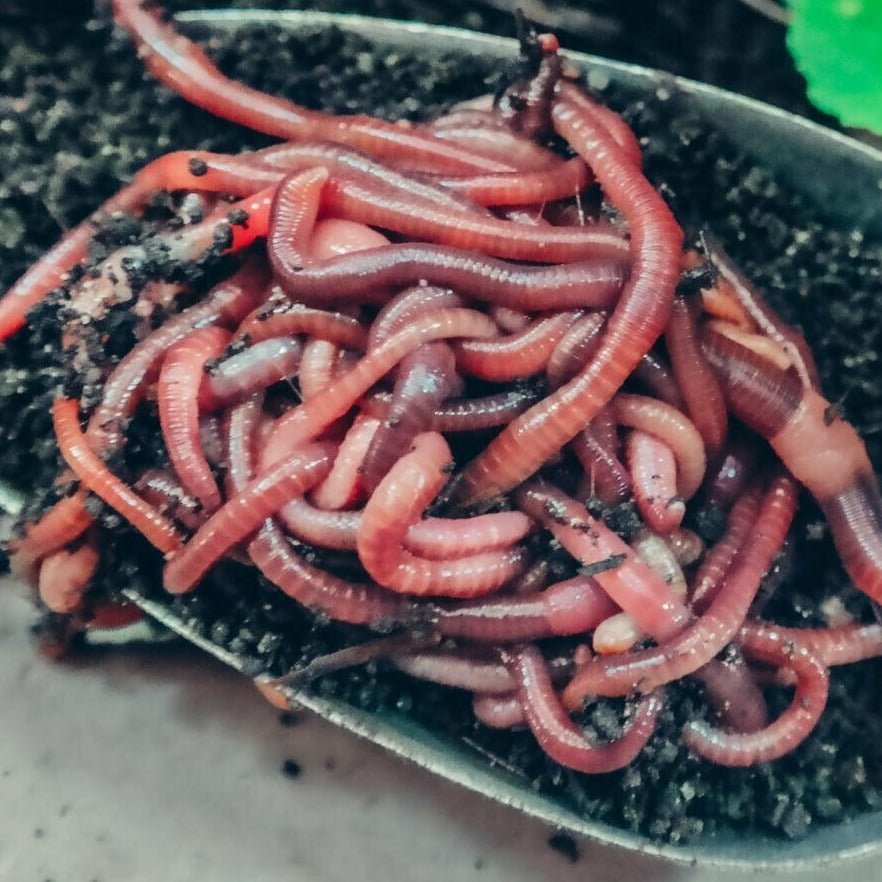Experience the Perks of Using Red Wiggler Express for Superior Lawn Care
Experience the Perks of Using Red Wiggler Express for Superior Lawn Care
Blog Article
Open the Tricks of Red Wigglers: Your Overview to Composting Success
The combination of red wigglers into composting techniques offers a considerable chance for enhancing soil health and wellness and advertising sustainability. These microorganisms are not just reliable recyclers of organic waste; they provide a myriad of advantages that can transform yard monitoring. Recognizing their demands and behaviors is important for enhancing their capacity, from setting up a suitable worm bin to feeding them the right products. As we explore the essential parts of effective vermicomposting, one might question just how these tiny creatures can bring about a much more vibrant and efficient yard ecological community.

What Are Red Wigglers?
(Red Wiggler Express)Red wigglers, clinically called Eisenia fetida, are a species of earthworm mainly utilized in composting as a result of their remarkable capacity to disintegrate organic matter effectively. These worms are identified by their reddish-brown pigmentation and a fractional body, usually determining in between 3 to 4 inches in size. Unlike various other earthworm varieties, red wigglers thrive in rich, natural settings, making them suitable for vermicomposting systems.
Native to North America, they are frequently located in decomposing fallen leaves and compost heap, where they play an important duty in nutrient recycling. Their adjustment to living in a wet, cardio setting allows them to eat large quantities of organic waste, simplifying into nutrient-rich spreadings that boost dirt health.
Red wigglers replicate swiftly, with a solitary worm capable of producing numerous cocoons each week, each having multiple hatchlings. Comprehending the biology and behavior of red wigglers is essential for maximizing their possibility in composting applications.
Benefits of Using Red Wigglers
Using the power of red wigglers in composting supplies many benefits that boost soil health and promote lasting waste management. These amazing organisms efficiently damage down raw material, changing cooking area scraps and yard waste right into nutrient-rich vermicompost. This ended up item is extremely beneficial for plant growth, as it boosts dirt structure, enhances moisture retention, and enhances nutrition accessibility.

(Red Wiggler Express)Furthermore, the existence of red wigglers in your composting system can speed up the composting process, creating top quality garden compost in a portion of the time compared to standard methods. The castings generated by these worms are likewise including useful microorganisms that better improve the dirt community.
Establishing Your Worm Container
Producing an efficient worm bin is an uncomplicated process that can significantly boost your composting efforts. Worm containers can be made from plastic storage space containers, wooden boxes, or commercially readily available worm bins.
Next, prepare the bed linens product, which serves as the worms' habitat. A mix of shredded paper, cardboard, and coconut coir works well, providing a comfy environment for the worms. Go for a bed linen depth of regarding 4-6 inches. Moisten the bed linens lightly, guaranteeing it looks like a damp sponge without excess water merging at the base.

Feeding Your Red Wigglers
To make certain the health and productivity of your red wigglers, it is vital to supply them with a well balanced diet regimen that meets their nutritional requirements. Red wigglers grow on a varied variety of natural materials, which not only supply required nutrients but also promote efficient composting.
Start by integrating cooking area scraps such as veggie peels, fruit cores, and coffee premises. Stay clear of citrus fruits, onions, and garlic, as these can be detrimental to worm wellness. Additionally, introduce shredded paper, cardboard, and completely dry fallen leaves to develop a well-aerated atmosphere.
Feeding regularity must be monitored; usually, worms can consume half their body weight in food weekly. It is critical to prevent official statement overfeeding, as excess food can bring about unpleasant smells and attract bugs. A good technique is to add food in little quantities, allowing worms to refine it prior to introducing much more.
Keeping moisture levels is also vital; the bed linen must perspire however not soaked. Be sure to on a regular basis examine the temperature and pH levels of the bin to make sure an optimum setting for your red wigglers, inevitably enhancing their composting efficiency.
Harvesting and Utilizing Compost
A successful composting procedure with red wigglers finishes in the abundant, dark compost referred to as vermicompost, which can significantly enhance dirt wellness and plant development. Gathering this nutrient-dense material typically takes place every 3 to six months, depending on the dimension of your system and the quantity of organic matter being refined.
To gather, gently different the garden compost from the worms and any type of undecomposed materials. One reliable technique involves relocating the components of the bin away and adding fresh bedding and food to the void, encouraging the worms to move. After a few days, the garden compost can be gathered from the opposite side.
It is important to make use of vermicompost correctly to optimize its advantages. By incorporating vermicompost right into your horticulture regimen, you not just reuse organic waste however additionally create a successful ecosystem that supports lasting horticulture practices.
Final Thought
In recap, red wigglers work as outstanding allies in composting initiatives, transforming organic waste right into nutrient-rich vermicompost (Red Wiggler Express). Their one-of-a-kind biological qualities and reliable waste handling capabilities contribute considerably to sustainable horticulture methods. By understanding the ideal problems for their environment, feeding requirements, and garden compost harvesting strategies, gardeners can boost dirt health and promote plant vitality. Welcoming vermicomposting not just lowers landfill waste but likewise promotes a much more eco liable strategy to horticulture and source management.
Report this page